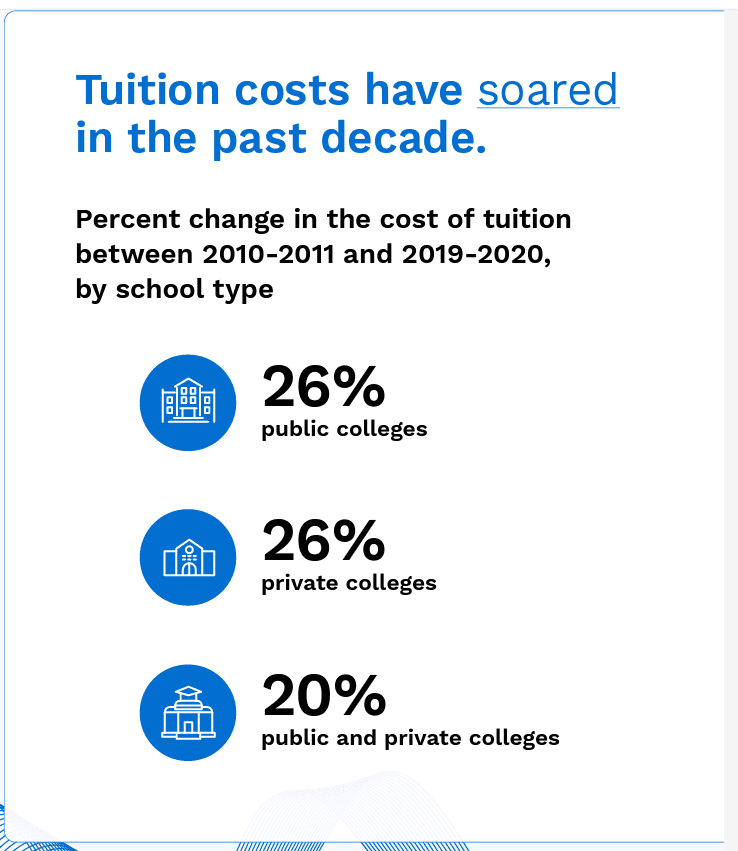Colleges Find a Digital Payment Silver Lining Amid Revenue Squeeze

Colleges face a new financial hurdle: employers dropping degree requirements for prospective hires.
Higher learning institutions are battling unprecedented pressure to maintain enrollment numbers. A tight labor market plus prolonged inflation has stressed the already-inefficient legacy payments system burdening many colleges.
And there is a new challenge, as reported by The Wall Street Journal. Major corporations and states seeking to fill public-sector positions are reconsidering four-year degrees as employment qualifications. Although undergraduate degree holders, on average, earn more than high school graduates over a lifetime ($2.8 million versus $1.6 million, respectively), student loan debt is a continued challenge for many borrowers who are concerned about their ability to repay those loans.
A November report from PYMNTS and American Express details rising tuition and boarding fees over the past decade. These dramatic increases may present difficulties for some potential students (and their parents financing these degrees). This is an especially current concern, given that cost-of-living expenses due to inflation have 60% of Americans living paycheck to paycheck.

A common pain point for colleges is their reliance on legacy payments systems that cannot meet modern institutional needs. Other challenges cited in the PYMNTS survey included the inability to handle recurring payments and the length of time required to receive payments. Seventy-two percent of schools’ financial leaders consider their payments operations to be only somewhat or slightly effective, as they consume, on average, nearly 3% of college budgets. The true cost could be higher when factoring in employees’ hours addressing errors and filing paperwork.
This need for change creates an opportunity for colleges and universities and may consider digital payment platforms as one solution. Cost-cutting measures applied to legacy payments systems may open the possibility of passing those savings on to students through reduced fees. Solving one of the problems surrounding legacy payments systems may not bring enough cost reduction to significantly offset tuition, but resolving multiple legacy payments issues could make a consequential difference. Failing to revamp outdated payment systems could cost schools much more than administrative overhead. Even a slight dip in student body numbers could mean exponential problems for higher learning institutions in this competitive market.
Many institutions lack the infrastructure to implement these changes, but there is good news: Colleges interested in reducing costs by adopting digital platforms can partner with companies to consolidate their payment operations through strategies like ID card innovation and all-in-one platforms. For schools with multiple siloed payment platforms handling different areas, such as tuition, dining and bookstores, this consolidation would streamline operations and simplify compliance and security.
Utilizing digital payment platforms doesn’t have to be an all-or-nothing effort. Adoption may start as a small introduction to the school’s wider payment system, such as tracking cafeteria payments and then moving on to associated activities. These incremental digital upgrades to the campus’ operations may provide students with the consistent payments experience they seek – while helping to boost enrollment in an inflation-strained economy.
